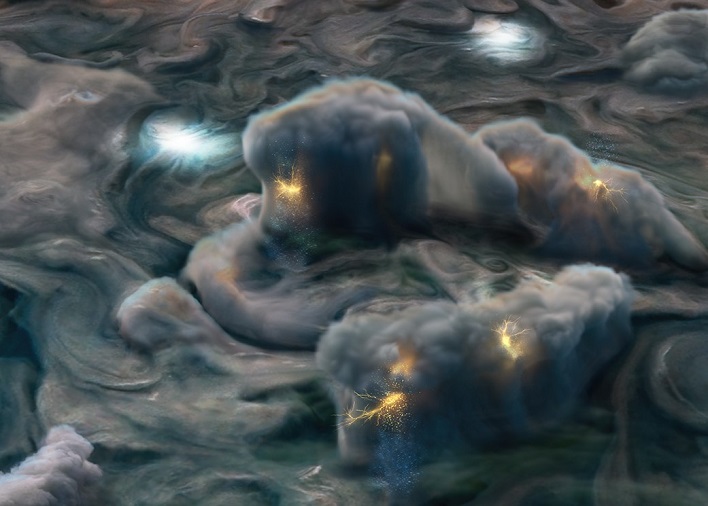NASA's Juno Spacecraft Captures A Stunning Green Lightning Bolt Striking Jupiter
One of the wonderful aspects of space exploration is that it is not only space agencies like NASA doing all the work. Citizen scientist Kevin M. Gill processed the above image from raw data collected from the JunoCam instrument. The image was captured while Juno was around 19,900 miles (32,000 kilometers) above Jupiter's cloud tops, according to a recent NASA blog post.
Having the cooperation of citizen scientists like Gill is helping other scientists to try and understand the features of Jupiter, which includes its mammoth storms and how lightning-like events occur on the planet.
Around the same time the image was captured, NASA released new results from its Juno mission that suggested Jupiter is home to what is referred to as "shallow lightning." Shallow lightning is an "unexpected form of electrical discharge" that originates from clouds in an ammonia-water solution. In contrast, lightning here on Earth originates from water clouds.
Some other new findings from the Juno mission suggested that these violent thunderstorms may form from "slushy ammonia-rich hailstones" that the team calls "mushballs." Scientists theorize that these mushballs steal ammonia and water in the upper atmosphere and then carry them into the lower portions of Jupiter's atmosphere.

Becker added that at higher altitudes, the ammonia acts like an antifreeze, lowering the melting point of water ice and thus allowing the formation of a cloud with ammonia-water liquid. She remarked, "In this new state, falling droplets of ammonia-water liquid can collide with the upgoing water-ice crystals and electrify the clouds. This was a big surprise, as ammonia-water clouds do not exist on Earth."
NASA says that understanding the meteorology of Jupiter helps scientists to develop theories of atmospheric dynamics for all the other planets in the solar system, as well as exoplanets being discovered outside our solar system. By comparing how violent storms and atmospheric physics work across the solar system, planetary scientists are able to test theories under different conditions.

